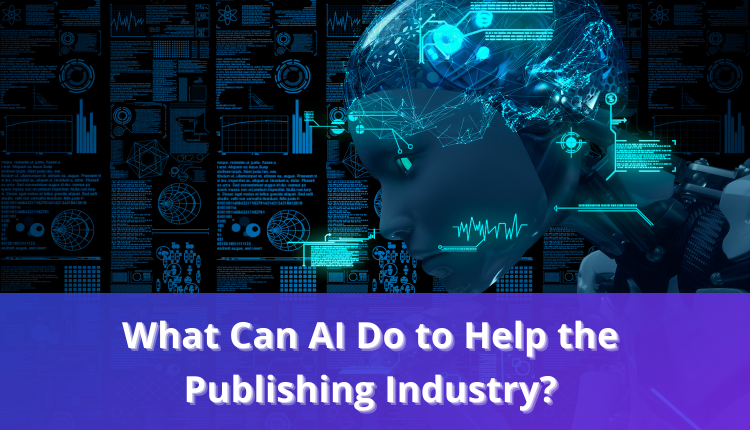Technological developments impact every sector of business, and the publishing industry is no exception. Publishing and media have been undergoing a rapid transformation as technological developments change the way that people work and plan their approach to tasks. There has been a rise in smart devices and a shift towards conducting much of our day-to-day lives online. This has resulted in print journalism becoming much less popular as online journalism takes over. E-readers have made whole libraries accessible from anywhere in the world with an internet connection, which in turn has influenced trends in content creation and marketing. And of course, artificial intelligence, or AI, has entered the industry as well. What role has AI played in transforming the publishing industry, and what lies ahead?
Table of Content:
How are Publishers Using AI?
Many people hear the words “AI” and “publishing” in the same sentence and imagine a world where books are written by robots. The presence of AI in publishing, like in many fields, has created controversy among people in the industry. While some fear for the future of their jobs, others embrace the possibilities that AI offers to make their jobs easier. How is AI being used by publishers?
To understand the role that AI plays in publishing, it is important to understand the stages of the publishing process. It is not as simple as simply writing, editing, and releasing a book to the public. In addition to authors and editors, publishing requires marketers, market and data analysts, researchers and fact checkers, salespersons, and intellectual property lawyers to name a few. AI is helping people perform better in all of these roles. The uptake has been rapid and broad. According to Publishers Association, 2017 is when the majority of publishers began to really invest in AI tools.
One of the biggest ways that AI is used is in content classification. By tagging and sorting content, AI assists in making it easier for people to find and consume the media they want. If you’ve ever purchased a book online and had similar books recommended to you, you have experienced AI in action. This type of tool is increasingly critical as the internet makes more content available than ever before. Similarly, AI can identify trends in what consumers are reading to assist in content acquisition and market prediction. AI is also used to check for plagiarism and avoid and create brief summaries or snippets for social media of articles.
AI Tools for Research and Writing
Research is a key aspect of any kind of writing, and as such, there have been a great number of resources devoted to developing AI tools for researchers. Tools like Google Scholar help locate relevant research and track citations and other metrics. A growing number of tools including EndNote, EverNote, and Mendeley help you organize your notes, references, and bibliographies. The all-in-one AuthorONE offers an array of tools in one platform for researchers, providing help in summarizing research, identifying appropriate journals to publish in, plagiarism checks, and more. In other words, AI tools like these are helping researchers automate or at least ease the tedious, repetitive tasks that are a necessary part of research. AI can even help format manuscripts to fit the requirements of specific academic journals prior to submission.
A number of AI writing tools exist as well to help writers and researchers improve the quality of their writing. Clear, concise writing is essential for any writer, particularly academics. While it is possible to engage the services of professional editors and publishing assistants like Enago, specialized AI tools like Trinka, which is designed for academics and researchers and provides tailored academic editing, are also becoming increasingly popular. Trinka is an AI writing tool that is designed specifically for technical and scientific writing, making it an invaluable AI assistant to editors and writers in scientific and technical fields. By incorporating tools like these, editors can reduce their workload, speed up their workflow, and improve the overall quality of their work. At the same time, writers and researchers can self-edit as they go, which further smooths workflow and efficiency.
The Use of AI in Academic Publishing
Another area that has seen rapid uptake of AI tools is academic publishing. As we saw above, there has been an increase in AI tools designed specifically for those performing research, academic writing, and technical writing. Similarly, a growing number of AI tools are being designed to perform the specific tasks required by academic publishers. These include plagiarism and copyright checks as well as tools to identify peer reviewers and locate relevant research for authors. As academic publishing struggles to overcome its own biases and past errors, AI has the potential to offer unbiased selection of peer reviewers and increase the diversity of authors who are published.
The Future of AI in Publishing
Of course, while AI tools are increasingly helpful in a variety of roles within the publishing industry, we are a long way off from being able to lie back and relax while robots do our jobs for us. One recurring issue with AI tools is that they are limited by the data inputs they learn from. While an AI tool that selects peer reviewers may have the potential to be unbiased, it also has the potential to replicate existing biases depending on the selection criteria it has been taught. Another problem is that AI simply doesn’t have the ability to distinguish all of the nuances of tone, context, and other aspects of language that make human communication so unique. While AI translation tools and editing tools continue to improve, comical errors are still not uncommon. All in all, while there is certainly a place for AI in the publishing industry, the likelihood appears that this place is next to humans, not instead of them.

